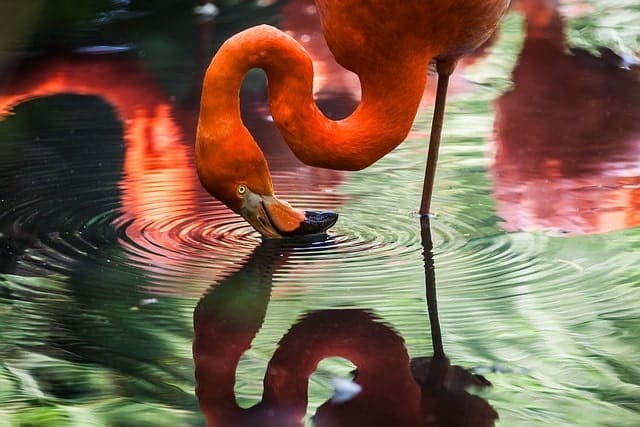Mirror gazing, also known as scrying, is an ancient practice that dates back centuries. It involves looking into a mirror or other reflective surface to induce altered states of consciousness. Furthermore it enhances spiritual insights, and connect with one’s inner self. This article explores the art of mirror gazing, its historical significance, and how it can be utilized as a powerful tool for spiritual awakening and self-discovery.
The Art of Mirror Gazing
Mirror gazing is an introspective practice that requires focus, patience, and an open mind. The process involves gazing steadily into the reflective surface, allowing thoughts to subside, and entering a meditative state. The mirror serves as a portal to access the depths of the subconscious mind and tap into higher levels of consciousness.
During the process of gazing, the reflective surface acts as a mirror to one’s inner self. This is reflecting hidden emotions, desires, and unresolved issues. This practice encourages individuals to confront their fears and delve into the depths of their psyche with self-compassion and curiosity. As the mind becomes still, practitioners may experience a sense of oneness and interconnectedness with the universe, fostering a profound spiritual experience.
Historical Significance of Mirror Gazing
Mirror gazing has been practiced in various cultures and spiritual traditions throughout history. Ancient civilizations, such as the Egyptians and Greeks, used reflective surfaces for divination and spiritual purposes. The technique was also popular during the Middle Ages and the Renaissance era, often associated with mystics and seers.
In ancient Egypt, mirror gazing was believed to connect individuals with the realm of the gods and provide glimpses into the future. The Greeks utilized polished metal surfaces, like bronze or copper, as mirrors for scrying, seeking guidance from divine entities.
During the Middle Ages and the Renaissance, this popular gazing technique experienced a resurgence, with practitioners using mirrors as a means to access higher knowledge and receive prophetic visions. The popularity of this practice persisted through various spiritual traditions. This was highlighting its enduring significance as a potent method of seeking spiritual wisdom and understanding.
The Science of Mirror Gazing
While mirror gazing is often associated with mysticism, there are scientific explanations for its effects. Gazing at a fixed point, such as one’s reflection, can induce a state of trance and altered consciousness, similar to the effects of deep meditation. It activates the brain’s alpha waves, promoting relaxation and heightened awareness.
In recent years, some researchers have explored the connection between mirror gazing and quantum physics. Quantum theory suggests that at the subatomic level, particles can exist in multiple states simultaneously, and observation can influence their behavior. Similarly, gazing in the mirror may tap into the observer effect. This is where the act of gazing at one’s reflection may create a dynamic interaction between the observer and the observed. Potentially this can open pathways to deeper self-awareness and spiritual insights.
While further scientific investigation is needed, the parallels between gazing in the mirror and quantum physics have sparked interest and speculation in the realm of consciousness exploration.
Preparing for a Mirror Gazing Session
Before starting a mirror gazing session, it is essential to create a conducive environment. Choose a quiet and dimly lit space where you won’t be disturbed. Set an intention for the session, whether it’s seeking guidance, self-reflection, or spiritual awareness.
Incorporate calming elements into the space, such as candles, crystals, or soothing music, to enhance the ambiance and promote relaxation. Ensure that the mirror is clean and free of any smudges or distractions that might hinder the gazing experience. Take a few moments to center yourself before beginning the session, focusing on your breath and allowing any tension to dissolve, creating a receptive and focused mindset for the practice.
The Process of Mirror Gazing
Sit comfortably in front of the mirror and relax your body and mind. Focus your gaze on a fixed point in the reflection, such as your eyes or the center of the mirror. Allow your mind to become still, letting go of any thoughts or distractions. Be open to whatever experiences or insights may arise.
As you continue to gaze into the mirror, you may notice subtle shifts in your perception or the appearance of images, colors, or symbols. Stay present and observe without judgment, allowing the experience to unfold naturally.
If your mind starts to wander or thoughts arise, gently bring your focus back to the reflection. Continue to maintain a state of mindfulness and receptivity. Trust in the process and be patient with yourself, as it can vary in its effects and may require practice to fully harness its potential for spiritual awareness and self-discovery.
Deepening Spiritual Awareness
Mirror gazing can be a powerful tool for deepening spiritual awareness and self-discovery. As you continue the practice, you may experience a sense of unity with your higher self or the universe. The mirror becomes a metaphorical doorway to explore the hidden aspects of your psyche and connect with your inner wisdom.
Confronting the Shadow Self
Mirror gazing can also help confront the shadow self. This is the part of our psyche that contains repressed emotions, fears, and unresolved issues. By acknowledging and integrating these aspects, we gain a deeper understanding of ourselves and can move towards wholeness and healing.
Confronting the shadow self during the process of gazing can be a transformative and cathartic experience. As we courageously face and embrace these aspects of ourselves, we release emotional burdens and create space for personal growth. This can lead to a more authentic and empowered way of living. By shining a light on the shadow self, mirror gazing becomes a powerful tool for inner healing and self-liberation.
Receiving Spiritual Insights
During these gazing sessions, individuals may receive spiritual insights or intuitive messages. These insights can provide guidance and clarity on life’s challenges and decisions. Keeping a journal to record these experiences can be valuable for future reflection and understanding. Start a weekly routine with mindfulness journaling and write down all the gazing reflections.
Overcoming Resistance and Fear
Some individuals may feel resistance or fear towards mirror gazing, especially when confronting the deeper aspects of themselves. It is essential to approach the practice with self-compassion and gentleness. Over time, the resistance may dissipate as the practice becomes more familiar and comfortable.
Integrating Mirror Gazing into Daily Life
This gazing experience doesn’t have to be limited to formal sessions. Integrating reflective practices into daily life, such as gazing into a mirror before bed or upon waking. This can promote self-awareness and spiritual connection throughout the day.
You can also incorporate it into daily rituals like affirmations or setting intentions while looking into the mirror. This practice enhances the power of positive self-talk and reinforces your goals and aspirations. Taking a few moments each day to connect with your reflection allows you to establish a deeper relationship with yourself. In return this helps you fostering self-acceptance and self-love.
As this technique becomes a regular part of your routine, you may find that it brings a sense of grounding and inner peace. It can enable you to navigate life’s challenges with greater clarity and resilience.
Conclusion
Mirror gazing is a profound and transformative practice that offers a gateway to spiritual awareness and self-discovery. By delving into the depths of the subconscious mind and connecting with our higher selves, we gain insights and guidance that can lead us on a path of personal growth and spiritual awakening. As we embrace the art of this technique with openness and curiosity, we open ourselves to a world of inner wisdom, healing, and spiritual fulfillment.
Mirror Gazin – FAQ
If you still have some questions about what this exactly means and how it can aid in your spiritual journey. Check out the frequently asked questions and start your experiences with this amazing spiritual technique.
Mirror gazing, also referred to as scrying, is an age-old ritual that entails fixing one’s gaze on a reflective surface like a mirror, water body, or crystal. The primary goal of this practice is to enter altered states of consciousness and attain profound spiritual insights.
Mirror gazing shares similarities with meditation as both practices induce altered states of consciousness and promote relaxation. However, mirror gazing is a form of focused meditation that involves visual stimuli, whereas traditional meditation may involve focusing on the breath or a specific mantra. Both practices can complement each other and enhance overall well-being.
The duration of a the gazing session can vary depending on individual preference and experience level. Beginners may start with shorter sessions of 5-10 minutes and gradually increase the duration as they become more comfortable. Advanced practitioners may engage in longer sessions lasting 15-30 minutes or more. It’s essential to listen to your intuition and not force yourself to continue beyond your comfort level.
Mirror gazing can be done both alone and with others, depending on personal preference. Some practitioners find solace and focus when they practice in solitude, while others may benefit from group settings, such as guided mirror gazing sessions or spiritual gatherings. It is essential to create a peaceful and distraction-free environment, regardless of whether you choose to practice alone or with others.
Mirror gazing is generally considered safe. However, some individuals may experience feelings of discomfort, resistance, or emotional intensity during the practice. It is essential to approach the practice with self-compassion and take breaks if needed. If you have a history of mental health concerns or are experiencing significant emotional distress, it is advisable to consult with a healthcare professional before engaging in this technique or any other spiritual practice.


